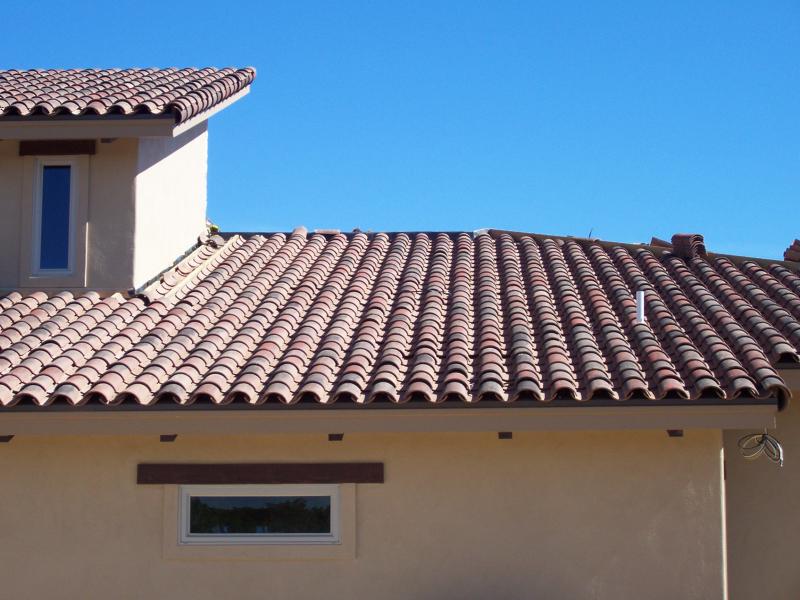 While roofing materials are designed to withstand extreme weather conditions, they will eventually show signs of deterioration and there is no real time line as to when this deterioration may begin since different weather conditions cause this time frame to vary. So the only way to know when deterioration is starting is for the roof to be personally monitored and diagnosed.
While roofing materials are designed to withstand extreme weather conditions, they will eventually show signs of deterioration and there is no real time line as to when this deterioration may begin since different weather conditions cause this time frame to vary. So the only way to know when deterioration is starting is for the roof to be personally monitored and diagnosed.
Inspections
Monitoring the condition of a roof requires regular inspections. This should be done annually, ideally before the winter season begins so that there is adequate time to perform any necessary repairs before the first snow begins. Examinations should also be performed after a severe storm with hail and strong winds as these kind of storms can easily cause damage such as broken shingles and ones that have been ripped from the sheathing.
An inspection can often be done simply by using binoculars. Yet there are some areas such as the valleys and the flashing that will require inspection by actually climbing onto that top structure. In such cases, such a scrutiny should be performed with extreme caution. Rubber-soled shoes should be worn for better traction and only when the roof is completely dry.
Signs
Following are some of the signs to look out for during an inspection that are a good indication of an unhealthy roof.
- Curling – Newly-installed shingles are normally flat; however, constant exposure to heat and rain will eventually cause the shingles to develop a curvature. Curling is bad since the sides of a curled shingle are open for water to enter, which can create considerable drag that may allow shingles to be ripped off easily during strong winds. Curling does not happen overnight and is usually only seen on older shingles. Asphalt shingles generally start to curl after thirty years of constant exposure to heat and cold; curling on wood shingles usually occurs much faster, after about ten to fifteen years of use.
- Buckling – Buckling usually occurs due to thermal shock; sudden heat can cause material to expand. The lack of proper expansion spacing between shingles can cause them to bend upwards. While buckling may be temporarily relieved when the temperature drops, any cracks that have occurred due to this expansion will be permanent.
- Ceiling Stains – Spots are usually seen as brown stains on the ceiling caused by water leakage. If a stain is only located in one place, then the damage is most likely repairable; however, if there are many spots like this all over the house, then the roof will most likely need to be replaced.
- Brittleness – Most materials tend to turn brittle over time due to constant heat exposure, with the exception of slate and metal. For example, asphalt shingles and PVC are naturally flexible when new; however, they will lose flexibility and become brittle towards the end their service life. To test for brittleness, simply bend one end of the shingle; if it breaks then brittleness is already starting to take place. Falling and missing shingles are a clear indication of such a problem.
Repair vs. Replacement
After an examination finds that the roof does show damage, the question of whether to repair or replace arises. In most cases, the decision is quite easy, as a small amount of damage can require repair and a large amount can mean replacement It there is no clear distinction between the two, the age of the structure will have to be determined.
If the expected service life has been passed, further problems are inevitable; even if the damage is minimal, such problems will begin to surface and total replacement is a sound option. If the roof is not beyond its service life but three-quarters of it is damaged, then replacement is still the most practical option.
Learning how to diagnose unhealthy roof problems is an important asset to learn. Spotting damage early can prevent a problem from getting worse and keep the cost of repair to a minimum. If a roof is already past its service life and due for replacement, continuous inspection of its condition will better prepare an owner for the inevitable replacement project!
Contact Schulte Roofing For Any Houston Roof Needs!
Are you looking for a Houston roof company to diagnose any roofing problems? Check with Schulte Roofing at 800-367-7663 who is well-known for helping greater Houston area customers with all of their roofing needs!
